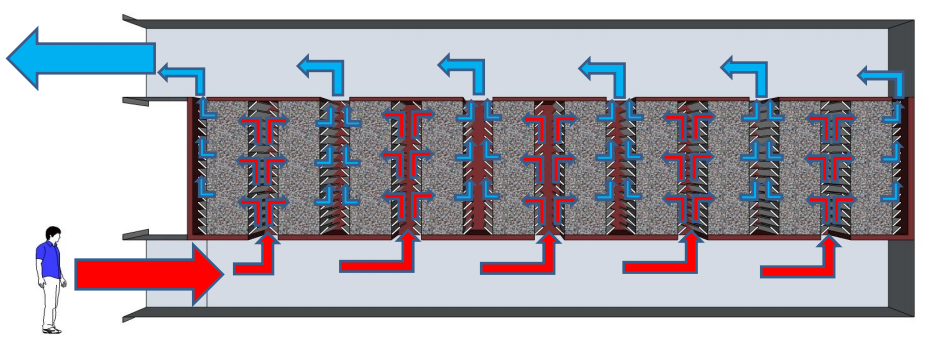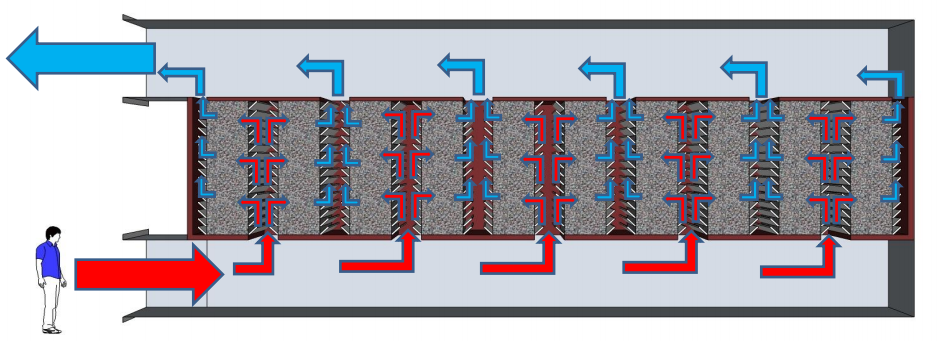‘Energy storage in salt 33x cheaper than lithium-ion’
Energy prices are currently fluctuating wildly. At times, for example when the sun is rotating and there is no wind, energy prices are very high. At other times, when the sun is shining and there is also a strong wind, energy prices sometimes even fall below the zero limit. The solution is of course energy storage, but unfortunately the existing methods for energy storage are quite expensive.
But Dutch and German entrepreneurs have found a solution, namely energy storage in materials such as rock or salt.
Contents
The principle of the heat accumulator
A heat accumulator stores energy in the form of heat. You can’t do much with heat in itself. With a temperature difference, yes. The greater the temperature difference, the more energy you can store, and the more efficiently you can extract the energy from the heat accumulator. The largest heat accumulator we know of is the earth itself. Billions of years ago it was charged with the energy of incoming asteroids and is now kept warm by radioactive decay.
Water is the best heat accumulator we know of, but there is a problem with water: it evaporates at 100 degrees. It is true that basalt (0.84 kilojoules per kilo per degree Celsius) stores five times less energy per kilo than water (4.19 kilojoules per kilo per degree C), but basalt can be heated to far above 1000 degrees before it even melt. And that in turn means that you can store many times more energy per kilo of red-hot basalt than in water. Molten salt has the advantage over basalt that you can pump it. You can also benefit from the heat of melting and solidification for extra energy storage.
The bigger the better
The disadvantage of all heat accumulators is that they leak energy into the environment. The smaller the heat accumulator, the bigger this problem. A thermos flask stays warm for a few hours, the earth has been for more than 4.5 billion years. So that’s why you want a fairly large heat accumulator if possible, because it leaks less heat. The CESAR heat accumulator, for example, is huge, about 30 m in diameter, but you can use it to make a small residential area gas-free.
You can roughly say: every eightfold increase in volume (doubling of the cross-section) means that the heat loss per liter is halved. So a half-cubic (8^3) storage vessel loses heat eight times as slowly as a one-litre storage vessel.
Have you “charged” a 200 x 200 x 200 meter block of basalt from 20 degrees to 600 degrees? In that case, it will store approximately the same amount of heat as is released when burning the 40 billion m3 of natural gas that we all consume in the Netherlands.
Energy storage in salt
Almost all natural gas used by industry is used for heat production. So if you could get hold of another source of heat, it would reduce the industry’s natural gas consumption to almost zero. And that solution is now available: the heat accumulator. If you were to install a heating network under the Botlek area, for example, and charge it with the solar and wind energy produced, you could remove the entire area from the gas and also dampen peaks on the voltage network.

This is also much cheaper than lithium ion. Lithium is a scarce metal. Also, lithium ion batteries do not last as long, because the structure of the battery deteriorates.
Heat batteries: low-tech, therefore hardly susceptible to failure
Heat accumulators are extremely simple. Basically it’s a clump of material with a filament and a tube system, so you don’t have that problem of deterioration, or much less. The German companies Storasol (stone) and Frenell (molten salt) have even managed to reduce the cost to 3% of the cost of an equally large lithium ion battery. You pay about 40-70 euros per kilowatt hour of stored power for a large molten salt heat accumulator.
With lithium ion batteries, that amount is about 800-1400 euros per kWh. The latter in the form of high-quality electrical energy that you can use almost 100%. With heat, this number is lower, depending on the temperature difference. But at these high temperatures, an efficiency of 60-70% is achievable, and almost one hundred percent if you use the heat directly.
Seasonal storage requires a huge heat accumulator
Small-scale heat accumulators are therefore perfectly suited to bridge the day-night differences. For seasonal storage, you should consider a much larger size heat accumulator. Then quickly think of a few tens of meters in diameter. But that in itself is not an issue. District heating already uses quite large installations, and the heat battery can be placed deep in the ground so that the space above the battery can be used for other things. In short: this is certainly a feasible way to solve the major problem for the breakthrough of sustainable energy, seasonal storage.



